Events
| | This section needs expansion. You can help by adding to it. (October 2015) |
Events from the year 1845 in the Netherlands
| | This section needs expansion. You can help by adding to it. (October 2015) |
| | This section needs expansion. You can help by adding to it. (October 2015) |
| | This section needs expansion. You can help by adding to it. (October 2015) |
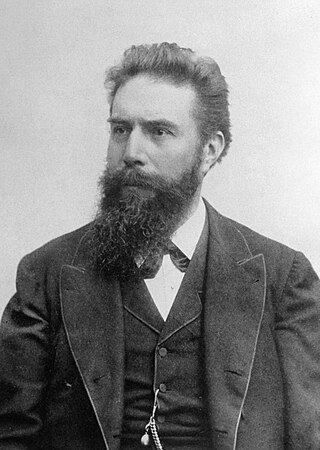
Wilhelm Conrad Röntgen was a German mechanical engineer and physicist, who, on 8 November 1895, produced and detected electromagnetic radiation in a wavelength range known as X-rays or Röntgen rays, an achievement that earned him the inaugural Nobel Prize in Physics in 1901. In honour of Röntgen's accomplishments, in 2004 the International Union of Pure and Applied Chemistry (IUPAC) named element 111, roentgenium, a radioactive element with multiple unstable isotopes, after him. The unit of measurement roentgen was also named after him.
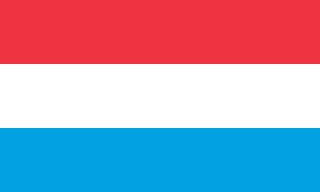
The national flag of Luxembourg consists of three horizontal stripes, red, white and light blue, and can be in 1:2 or 3:5 ratio. It was first used between 1845 and 1848 and officially adopted in 1993. It is informally called in the country, «rout, wäiß, blo».
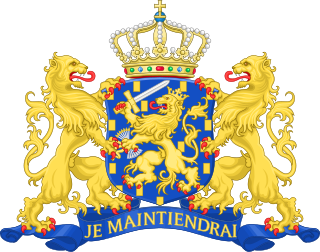
The prime minister of the Netherlands is the head of the executive branch of the Government of the Netherlands. Although the monarch is the de jure head of government, the prime minister de facto occupies this role as the officeholder chairs the Council of Ministers and coordinates its policy with the rest of the cabinet. In his role as head of government, the prime minister also represents the Netherlands in the European Council. The current acting prime minister, Mark Rutte, has been in the position since 14 October 2010, with his fourth cabinet being inaugurated on 10 January 2022. He resigned his position on 7 July 2023 and until a new prime minister is sworn in after the 2023 Dutch general election, he will serve in a demissionary capacity.

Hermann Schlegel was a German ornithologist, herpetologist and ichthyologist.

The SSS islands, locally also known as the Windward Islands, is a collective term for the three territories of the Dutch Caribbean that are located within the Leeward Islands group of the Lesser Antilles in the Caribbean Sea. In order of population size, they are: Sint Maarten, Sint Eustatius, and Saba. In some contexts, the term is also used to refer to the entire island of Saint Martin, alongside Sint Eustatius and Saba.
The Union of Baptist Churches in the Netherlands is a Baptist Christian denomination in the Netherlands. It is affiliated with the Baptist World Alliance. The headquarters is in Amsterdam.
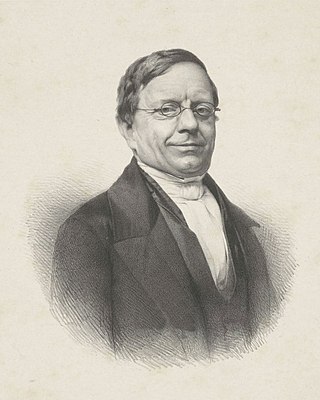
Abraham Jacob van der Aa was a Dutch writer best known for his dictionaries, one of notable people and the other of notable places in the Netherlands.

Hendrik Merkus, Baron de Kock was a Dutch general and nobleman who served in the Batavian Navy as Lieutenant Governor-General of the Dutch East Indies from 1826 to 1830. He also was Minister of the Interior of the Netherlands from 1836 to 1841.

Floris Adriaan van Hall, Baron of Hall was a prominent Dutch nobleman and statesman in the 19th century. He played an important role as representative of the Amsterdam trade and banking sector, and later as politician. He served as Prime Minister of the Netherlands from 1853 to 1856, and again from 1860 to 1861.
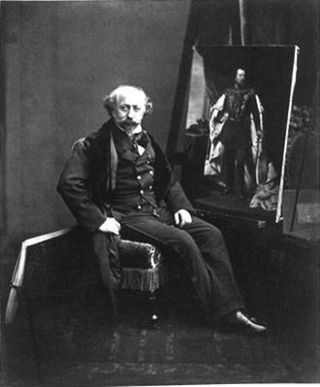
Nicolaas Pieneman was a Dutch painter, art collector, lithographer, and sculptor.

NN Group N.V. is the parent company of NN Investment Partners and Nationale-Nederlanden. Nationale-Nederlanden is one of the largest insurance and asset management companies in the Netherlands. NN Group is headquartered in The Hague, its office in Rotterdam is located in the skyscraper Gebouw Delftse Poort, which was the tallest skyscraper in the Netherlands until 2009. Aside from these two offices, the company has an office in Ede but no other main offices in the Netherlands, instead NN mainly relies on independent intermediaries for selling insurance.

Jan Jacob Rochussen was a Dutch politician. He served as Finance Minister from 1840 to 1843 and Governor-General of the Dutch East Indies from 1845 to 1851. He served as Chairman of the Council of Ministers from 18 March 1858 to 23 February 1860.
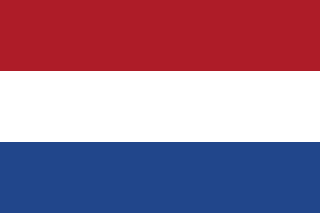
The Colony of Curaçao and Dependencies was a Dutch colony in the Caribbean Sea from 1634 until 1828 and from 1845 until 1954. Between 1936 and 1948, the area was officially known as the Territory of Curaçao, and after 1948 as the Netherlands Antilles. With the proclamation of the Charter for the Kingdom of the Netherlands on 15 December 1954, the Netherlands Antilles attained equal status with the Netherlands proper and Suriname in the new Kingdom of the Netherlands.

The Dutch Caribbean are the New World territories, colonies, and countries of the Dutch Empire and the Kingdom of the Netherlands located in the Caribbean Sea, mainly the northern and southwestern regions of the Lesser Antilles archipelago.

Suriname was a constituent country of the Kingdom of the Netherlands between 1954 and 1975. The country had full autonomy, except in areas of defence and foreign policy, and participated on a basis of equality with the Netherlands Antilles and the Netherlands itself in the Kingdom of the Netherlands. The country became fully independent as the Republic of Suriname on 25 November 1975.
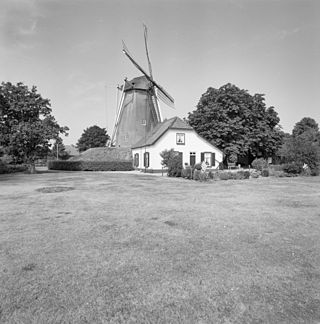
De Keetmolen is a windmill in Ede, Netherlands. According to the inscription under the sails and the sign at the entrance, the mill was built in 1750. This is incorrect; according to municipal records, the building permit issued in 1856 stated that the mill should be built within two years. The mill was opened in 1858.

De Hoop ("Hope") is a flour windmill in Ouddorp built in 1845 and fully renovated in 1984. It is one of the few windmills in the Netherlands that is still privately owned, and is still in full commercial operation.

Aan de Pegstukken is a windmill located on De Pegstukken 27 in Schijndel, North Brabant, Netherlands. Built in 1845 on an artificial hill, the windmill functioned as a gristmill. The mill was built as a tower mill and its sails have a span of 25.25 metres (82.8 ft). The mill is a national monument since 19 September 1973. The name of the mill comes from the street it is located on.

Herz Jesu-Lied, WAB 144, is the second of two motets of Anton Bruckner's St. Florian period, which is of uncertain authorship. If Bruckner was the composer, it was composed presumably in 1845-1846.
![]() Media related to 1845 in the Netherlands at Wikimedia Commons
Media related to 1845 in the Netherlands at Wikimedia Commons